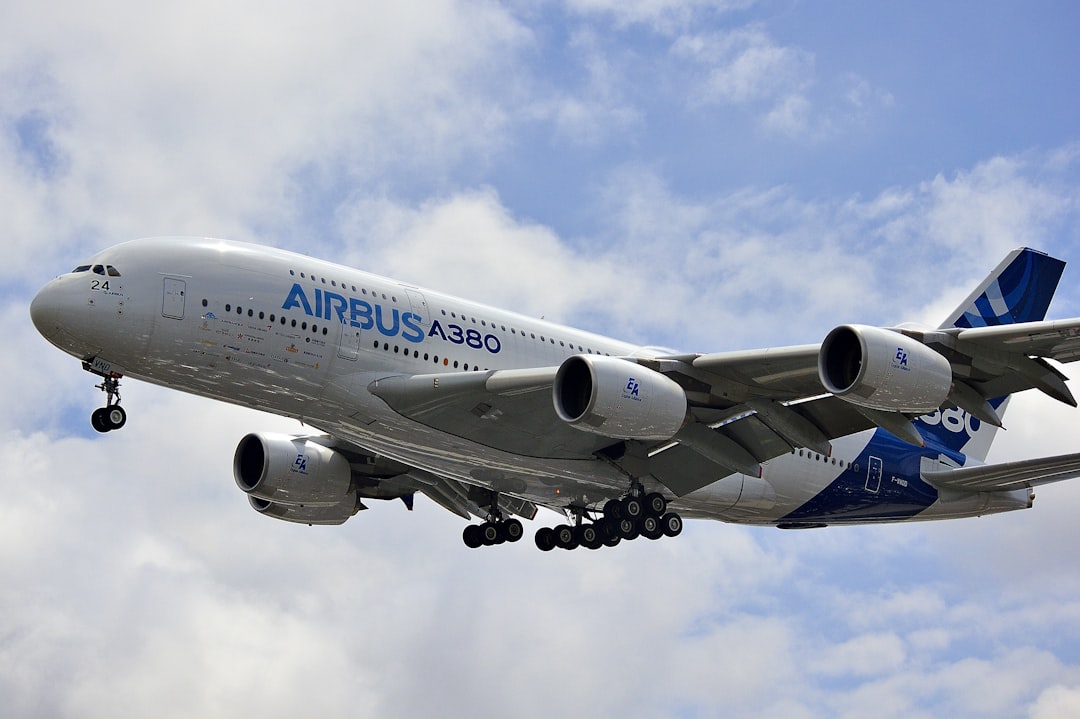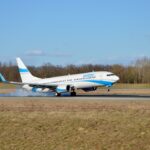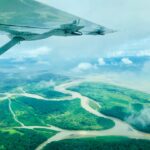Airplane mode is a feature found on most modern smartphones, tablets, and laptops, designed to disable all wireless communication functions. This includes cellular data, Wi-Fi, and Bluetooth connections. The primary purpose of airplane mode is to prevent devices from sending or receiving signals that could interfere with aircraft navigation and communication systems during flights.
However, its utility extends far beyond the confines of an airplane cabin. Users can leverage airplane mode in various scenarios to enhance their device’s performance and manage battery life more effectively. When activated, airplane mode provides a simple yet powerful way to disconnect from the digital world.
While it may seem counterintuitive in our hyper-connected society, there are numerous situations where temporarily disabling wireless communications can be beneficial. For instance, when traveling in areas with poor reception, enabling airplane mode can prevent the device from constantly searching for a signal, which can drain the battery. Additionally, users can still access offline content such as downloaded music, videos, and documents while in airplane mode, making it a versatile tool for managing connectivity and conserving resources.
How Airplane Mode Saves Battery Life
One of the most significant advantages of using airplane mode is its ability to conserve battery life. When a device is in airplane mode, it stops searching for cellular signals, which is one of the most power-intensive activities a smartphone or tablet can engage in. In areas with weak or fluctuating signals, the device expends considerable energy trying to connect to a network.
By activating airplane mode, users can eliminate this constant search, allowing the battery to last significantly longer. Moreover, airplane mode disables all wireless radios, including Wi-Fi and Bluetooth. These features also consume power when they are actively searching for connections or maintaining active links with other devices.
For example, Bluetooth devices like headphones or smartwatches often require a continuous connection to function optimally. By turning on airplane mode, users can halt these processes and further extend their device’s battery life. This is particularly useful during long trips or when access to charging facilities is limited.
Using Airplane Mode to Extend Battery Life

To maximize battery life during critical moments, users can strategically employ airplane mode. For instance, if a user notices that their battery is running low while out and about, activating airplane mode can provide an immediate boost in battery longevity. This is especially effective when the user does not need to receive calls or messages for a certain period.
By cutting off all wireless communications, the device can conserve energy and allow the user to continue using essential offline applications. In addition to emergency situations, airplane mode can be beneficial during routine daily activities. For example, if someone is commuting on public transport and does not require internet access, enabling airplane mode can help preserve battery life throughout the journey.
Users can still listen to downloaded music or read e-books without draining their battery on unnecessary background processes. This proactive approach to managing battery life can lead to a more efficient use of technology throughout the day.
Airplane Mode and Background Apps
Background applications are notorious for consuming battery life as they often run processes even when not actively in use. Many apps continuously refresh data in the background, checking for updates or notifications that can drain the battery over time. When airplane mode is activated, these background processes are effectively halted since the device cannot connect to the internet or cellular networks.
This means that apps like social media platforms or email clients will not be able to refresh their content until airplane mode is turned off. This feature can be particularly advantageous for users who want to limit distractions while focusing on specific tasks. For instance, students studying for exams may choose to enable airplane mode to prevent notifications from distracting them while they read or take notes.
By doing so, they not only save battery life but also create a more conducive environment for concentration. The ability to control which applications are allowed to run in the background while in airplane mode empowers users to manage their device’s performance actively.
Airplane Mode and Push Notifications
Push notifications are an integral part of modern smartphone usage, providing real-time updates from various applications such as messaging services, social media platforms, and news outlets. However, these notifications can also contribute significantly to battery drain as they require constant connectivity to function effectively. When airplane mode is enabled, all push notifications are disabled since the device cannot communicate with external servers.
This results in a quieter experience without the incessant pings and alerts that often disrupt daily life. For users who find themselves overwhelmed by notifications or who wish to take a break from constant connectivity, airplane mode offers a practical solution. By temporarily silencing notifications, individuals can focus on their tasks without being interrupted by incoming messages or alerts.
This feature is particularly useful during meetings or important events where concentration is paramount. Once the user is ready to reconnect with the digital world, they can simply disable airplane mode and catch up on any missed notifications at their convenience.
Airplane Mode and Location Services

Location services are another aspect of mobile devices that can consume significant amounts of battery life. These services rely on GPS and network triangulation to provide accurate location data, which requires continuous communication with satellites and cellular towers. When airplane mode is activated, location services are typically disabled as well since the device cannot access the necessary networks for location tracking.
This can lead to substantial energy savings for users who do not require location-based services at that moment. However, it is worth noting that some devices allow users to enable location services even while in airplane mode. This means that GPS functionality can still be utilized without draining the battery through cellular data usage.
For instance, travelers navigating through unfamiliar cities can use offline maps while in airplane mode by pre-downloading map data before their trip. This allows them to benefit from GPS navigation without incurring additional data charges or draining their battery on unnecessary background processes.
Airplane Mode and Data Usage
Data usage is a critical consideration for many smartphone users, especially those with limited data plans or those traveling internationally where roaming charges can be exorbitant. By enabling airplane mode, users can effectively halt all data usage on their devices. This prevents accidental overages from background apps that may otherwise consume data without the user’s knowledge.
For instance, social media apps may automatically upload photos or videos when connected to Wi-Fi or cellular data; however, in airplane mode, these actions are paused until connectivity is restored. In addition to preventing unwanted data consumption, airplane mode allows users to manage their data usage proactively. For example, if someone is nearing their monthly data limit but still wants to use their device for offline activities like reading e-books or playing downloaded games, they can switch on airplane mode to ensure no additional data is consumed inadvertently.
This level of control over data usage not only helps users stay within their limits but also fosters a more mindful approach to technology consumption.
Tips for Making the Most of Airplane Mode
To fully leverage the benefits of airplane mode, users should consider several practical tips that enhance its effectiveness in various scenarios. First and foremost, it’s essential to familiarize oneself with the settings of their specific device since different operating systems may offer varying functionalities related to airplane mode. For instance, some devices allow users to customize which features remain active while in airplane mode—such as enabling Wi-Fi or Bluetooth—while others may not.
Another useful tip is to plan ahead when traveling or engaging in activities where connectivity may be limited or unnecessary. Before embarking on a long flight or heading into an area with poor reception, users should download any necessary content—such as movies, music playlists, or e-books—to ensure they have access to entertainment without needing an internet connection. Additionally, taking advantage of offline modes available in many applications can further enhance the experience while in airplane mode.
Lastly, users should regularly assess their app settings and permissions related to background activity and notifications. By understanding which apps consume the most resources and adjusting their settings accordingly, individuals can optimize their device’s performance even when not using airplane mode. This proactive approach ensures that when they do choose to activate airplane mode for battery conservation or distraction-free time, they are maximizing its benefits effectively.
In conclusion, airplane mode serves as a multifaceted tool that extends beyond its original purpose of ensuring safe air travel. By understanding how it impacts battery life, background apps, push notifications, location services, and data usage, users can harness its capabilities for improved device performance and efficiency in everyday life.
FAQs
What is airplane mode?
Airplane mode is a setting available on most smartphones and other electronic devices that disables the device’s wireless communication functions, such as cellular, Wi-Fi, and Bluetooth. It is typically used during flights to comply with airline regulations.
Will airplane mode save battery?
Yes, enabling airplane mode can save battery life on your device. When in airplane mode, the device’s wireless communication functions are turned off, reducing the power consumption and extending the battery life.
How much battery does airplane mode save?
The amount of battery saved by using airplane mode can vary depending on the device and its usage. In general, users can expect to see a noticeable improvement in battery life when airplane mode is enabled, especially in situations where the device would otherwise be constantly searching for a signal.
Can I use certain features while in airplane mode?
While in airplane mode, most wireless communication functions are disabled, but certain features may still be available. For example, users can typically still access offline content, use the device’s camera, listen to music, and use other non-wireless functions.
Are there any downsides to using airplane mode?
One downside of using airplane mode is that it disables the device’s wireless communication functions, so users will not be able to make or receive calls, send or receive messages, or connect to the internet via Wi-Fi or cellular data. Additionally, some features and apps may not work properly without a wireless connection.










